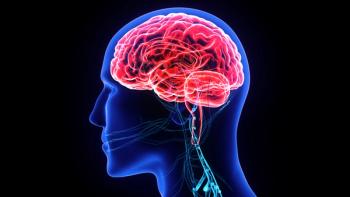
Two abstracts presented at the Migraine Trust Virtual Symposium investigated lasmiditan’s safety in elderly and pediatric migraine patients.

Two abstracts presented at the Migraine Trust Virtual Symposium investigated lasmiditan’s safety in elderly and pediatric migraine patients.

The research looked at inpatients with migraine on erenumab, and overall, found that the incidence was similar to patients in real-world settings.

The future of migraine research will include further investigations into understanding the pathophysiology of migraine outside of CGRP, said Frank Porreca, PhD, professor of pharmacology and anesthesiology at the University of Arizona and a member of the Department of Collaborative Research at Mayo Clinic in Arizona.

There is no question that posttraumatic headache and migraines are related, said the head of neurology research at the Mayo Clinic’s Arizona campus; the unknown issue is to what extent they are related.

Migraine prevention helps drive down functional disability among migraineurs, said Peter McAllister, MD, a neurologist, board certified headache specialist, and medical director of the New England Institute for Neurology and Headache.

The entry of a new class of migraine therapies has created a new wave of excitement. A presentation at the Migraine Trust International Symposium reviewed what clinicians now know about calcitonin gene-related peptide (CGRP) blockers.

Because patients with chronic migraine experience more monthly migraine days (MMD) than those with episodic migraine, chronic migraineurs will experience a greater reduction of MMD with erenumab, said Stephen Silberstein, MD, professor of neurology at Thomas Jefferson University and director of the Headache Center at Jefferson Health.

At a session Tuesday at the Migraine Trust International Symposium, one presentation delved into findings published this year in medication overuse headaches, prevention, and pathophysiology of migraine as well as cluster headaches.

Medication overuse headache is a peculiar disorder where the cure becomes the cause, said Rigmor Jensen, MD, professor of neurology at The University of Copenhagen and director of the Danish Headache Center.

Compared with 2018 and 2019, data from 2020 show reports of headache frequency increased, despite decreases in reports of the 4 most common migraine triggers, said Faraidoon Haghdoost, MD, a general practitioner and PhD student at The George Institute for Global Health in Sydney, Australia.

Two neurologists discuss what is known and unknown in switching patients with migraine from one calcitonin gene-related peptide (CGRP) inhibitor to another.

In an open-label extension spanning 5 years, the safety profile of erenumab was consistent with the double-blind treatment phase of the study, and there were no increases in adverse event rates.

Data from the long-term study of erenumab are very surprising in the sense that many of the patients continued to have significant results which continued for the duration of the study, said Stephen Silberstein, MD, professor of neurology at Thomas Jefferson University and director of the Headache Center at Jefferson Health.

One development in migraine science is the hypothesis that sex differences in migraine prevalence may be accounted for, in part, at the nociceptor level, said Frank Porreca, PhD, professor of pharmacology and anesthesiology at the University of Arizona and a member of the Department of Collaborative Research at Mayo Clinic in Arizona.

259 Prospect Plains Rd, Bldg H
Cranbury, NJ 08512
© 2025 MJH Life Sciences®
All rights reserved.
